Related Blogs
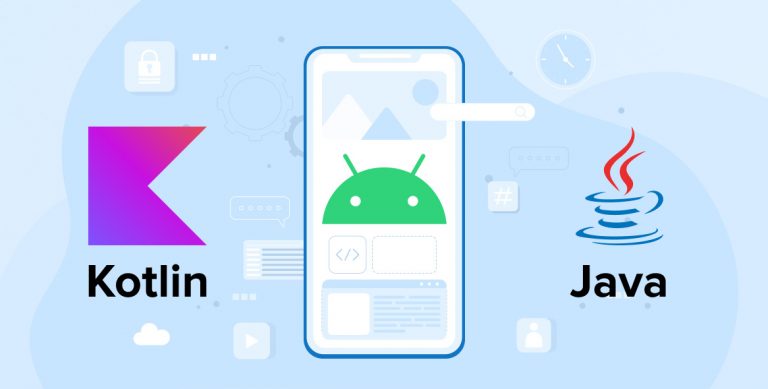
There are few languages more widely useful for Android app development – Java and Kotlin are two of them. You’ll find that these two languages are really vital, particularly in the field of Android programming. Knowing the distinctions between Kotlin vs Java is crucial if you are starting to develop Android apps. For instance, you know mobile app development companies can develop mobile applications in Kotlin at a much faster rate compared to Java.
This blog will allow you to have a head-to-head comparison of Kotlin vs Java, as well as learn about its unique features, strengths, and weaknesses.
1. Kotlin
JetBrains, the creator of industry-leading integrated development environments (IDEs) including IntelliJ IDEA, PhpStorm, Appcode, etc., created Kotlin, a strongly typed, broad sense purpose programming language. Kotlin is an an object-oriented and functional programming language that has been deemed “better” than Java while maintaining full compatibility with Java code.
Kotlin, backed by Google, was declared an official Android Development Language in 2017.
1.1 History of Kotlin
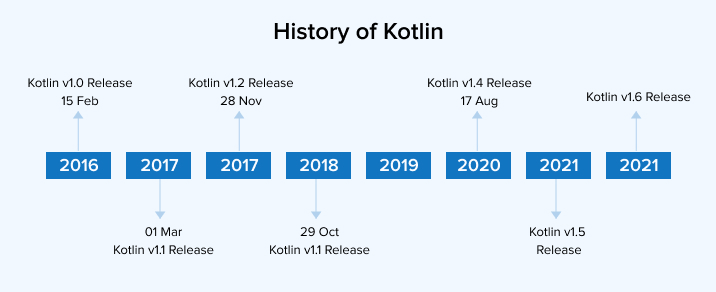
These are some of the most significant events in Kotlin’s past:
- Kotlin 1.0 debuted in 2016.
- In 2017, Google made an official statement that Kotlin would be given premier treatment in Android.
- Kotlin v1.3 was published in 2018, and it included support for asynchronous programming via coroutines.
- Kotlin was officially unveiled by Google in 2019 as the company’s recommended language for building Android apps.
So far, take a look at what Kotlin has achieved.
5️⃣ Here are the results so far:
— Kotlin (@kotlin) November 11, 2022
🚀 Nearly 95% of the top 1K Android apps use Kotlin.
🚀 60% of professional Android developers use Kotlin.
🚀Apps built with Kotlin are 20% less likely to crash.
1.2 Unique Features of Kotlin
Following are the features of Kotlin:
- High-performing user-defined flow control with lambda expressions and inline functions
- Moduli of extension
- Null-safety
- The use of savvy casting techniques
- Template strings
- Properties
- Essential builders
- Superior delegation
- Inferring the nature of a variable or property from its context
- Singletons
- Variation in declaration locations and expected type
- Range expressions
- Operator overloading
- Companion objects
- Structures of information
- Separate user interfaces for immutable and readable collections
- Coroutines
1.3 Pros and Cons of Kotlin
Kotlin has become a popular programming language among developers due to its unique advantages. However, developers also face some problems while working with Kotlin. Let’s explore the pros and cons of Kotlin in depth.
Benefits of Using Kotlin
Following are the benefits of Kotlin:
- You may use the Kotlin Multi platform framework to simultaneously target many platforms from a single codebase.
- Kotlin’s built-in null safety support is a godsend, particularly on Android with its abundance of legacy Java-style APIs.
- Compared to Java, it has less space for error since it is more succinct and expressive.
- Provides accessible and comprehensible code standards
- Breaks down complex programs into manageable chunks.
- Utilizes a wide variety of function types and advanced language constructs like lambda expressions.
- Facilitates the addition of new features by developers
- Provides a straightforward, nearly hands-off method of defining data classes.
- Kotlin’s simple syntax and readable type system make it an ideal language for beginners.
- Information from Java may be transferred and used in a number of different contexts thanks to this language.
- Kotlin will speed up the process of creating new code.
- The process of deploying and maintaining scalable Kotlin code is significantly less complicated.
Disadvantages of Kotlin
Following are the disadvantages of Kotlin:
- Due to the small size of the developer community, educational resources and expert guidance are in short supply.
- In Java, you won’t find any error-prevention features like checked exceptions.
- Taking longer to compile than Java.
- Due to Kotlin’s declarative nature, it might be useful to produce substantial quantities of boilerplate in the form of JVM bytecode.
2. Java
Java language was created by Sun Microsystems Inc’s James Gosling in 1995; in 2009, Oracle Corporation acquired the rights to the language. We may refer to Java as a high-level language since it simplifies and streamlines the process of writing, compiling, and debugging Java code.
Java is an Object-Oriented and statically typed programming language that uses classes and follows the “write once, run anywhere” approach. Applications written in Java may be executed on any computer with a Java Virtual Machine (JVM) installed. Java code is very popular and easy to grasp since it is so close to C and C++.
2.1 History of Java
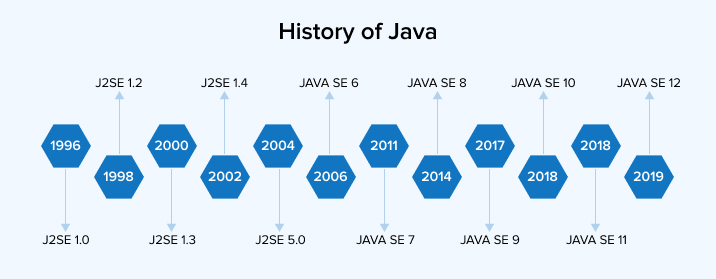
Indonesia is home to a stunning island by the name of Java. The java coffee plant is native to this region, and legend has it that the word “coffee” was coined in this area. James Gosling came up with the moniker while sipping coffee on the way to work. Because of the OAK, the group had made the decision to change the name. Silk, Revolutionary, Dynamic, DNA, and Jolt were some of the alternatives. Even though Silk was ultimately chosen, they went with Java since it was novel and popular.
Interesting fact about Java – Do you know how Java got its Name?
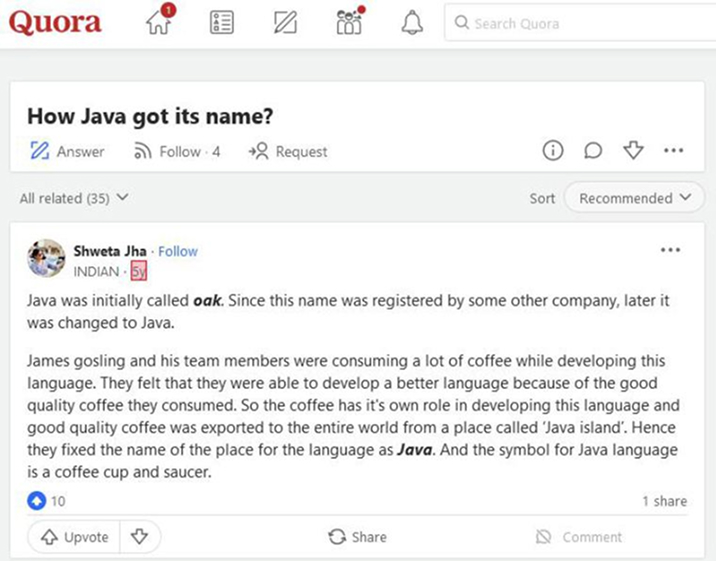
2.2 Unique Features of Java
Following are the features of Java:
- Checked exceptions.
- Primitive types in Java are not objects.
- Java code compiles faster than the Kotlin one.
- It supports ternary operator (a?b:c)
- Java supports implicit conversion. So that one can directly convert smaller types into bigger ones.
2.3 Pros and Cons of Java
Below is a list of the advantages and disadvantages of Java programming language.
Benefits of Java
- Improved issue detection and resolution thanks to checked exceptions
- It comes with a manual that details everything.
- Java has a sizable pool of talented programmers.
- Comprehensive third-party library support.
- You may use it to create repeatable code and consistent applications.
- It’s a multi-threaded setting where many tasks can be executed in the same software at the same time.
- Excellent performance.
- Library catalogs that are a breeze to use.
Disadvantages of Java
- Due to its many restrictions, Android API architecture is not a good fit.
- Calls for a lot of manual labor, which raises the possibility of mistakes.
- This is because the JIT compiler causes the application to run more slowly than usual.
- Java’s memory and CPU demands are rather high.
- No help for pointers and other low-level programming structures is included.
- The trash collector is completely out of your hands because Java lacks standard control methods like delete(), free().
3. Kotlin vs Java
Now that we have some background, you may be curious about the effect of Kotlin’s popularity on Java. Different people have different thoughts about this issue. Let’s start by comparing and contrasting the arguments put out by either side.
3.1 Null Safety
One of the most well-known sources of frustration for Java programmers is the occurrence of NullPointerExceptions. NullPointerExceptions is based on the premise that users should be allowed to assign a null integer to any object. However, let’s say that users try to utilize a reference to an object that turns out to be null. In that situation, developers will encounter a complication brought about by Java’s NullPointerExceptions.
Here’s a real life example from twitter.
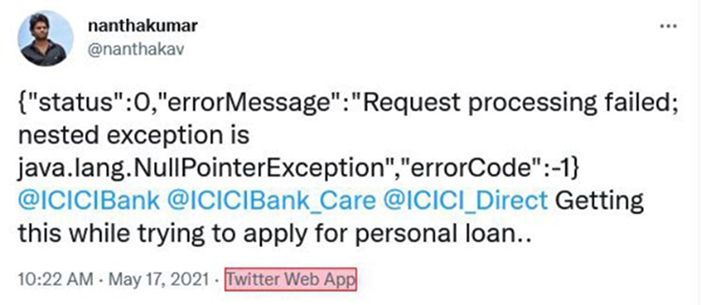
In comparison Kotlin vs Java, Kotlin does not allow null values to be assigned to variables or objects. To do so would cause compile errors in the code. Thus, Kotlin does not throw any NullPointerExceptions. A null value cannot be assigned to a variable unless the programmer marks it as nullable. One must insert a punctuation mark to do this:
val number: Int? = null |
val number: Int? = null
3.2 Extension Functions
As opposed to Java, Kotlin doesn’t need developers to use inheritance to expand class functionalities. In Kotlin, the programmer must add the name of the class being extended as a prefix to the title of the newly formed function employing the “.” notation in order to conduct the extension function.
open class baseClass (x:Int ) { .......... } class derivedClass(x:Int) : baseClass(x) { ........... } |
open class baseClass (x:Int ) { .......... } class derivedClass(x:Int) : baseClass(x) { ........... }
So you’ve created an auxiliary function, Java style, and then remembered that in Kotlin you can define it as an extension. No problem! Convert a parameter to a receiver of an extension function automatically. The reverse action also works: pic.twitter.com/x6JzuHpBfL
— Kotlin (@kotlin) September 15, 2020
In Java, you must build a new class and derive the capabilities of the parent class in order to add to the capabilities of an existing class. That is to say, and you can’t use the extend feature because it’s disabled.
class derived-class extends base-class { //methods and fields } |
class derived-class extends base-class { //methods and fields }
3.3 Code
Kotlin’s low code-base requirements are a major differentiator from Java. It’s a short, succinct language that makes less room for mistakes in the code and makes life easier for programmers.
Generally speaking, Kotlin takes less lines of code than Java to express the same functions, which benefits in developing enterprise applications. On top of that, it may be succinct without sacrificing clarity of syntax.
3.4 Coroutines Support
The default behavior of Android is for all elements of a given app to share the same function and thread (the main thread, which handles user interaction). Operations that need a lot of CPU time or network I/O take a long time. Either of these procedures blocks the calling thread until their whole has been finished after they have been started.
Java permits the development of several background threads to handle long processes off of the main thread. The negative is that it’s difficult to keep track of numerous threads at once, which might increase the likelihood of programming mistakes.
Kotlin is similar in that it allows for the creation of numerous threads. However, a superior and more accessible alternative, called coroutines, is presented.
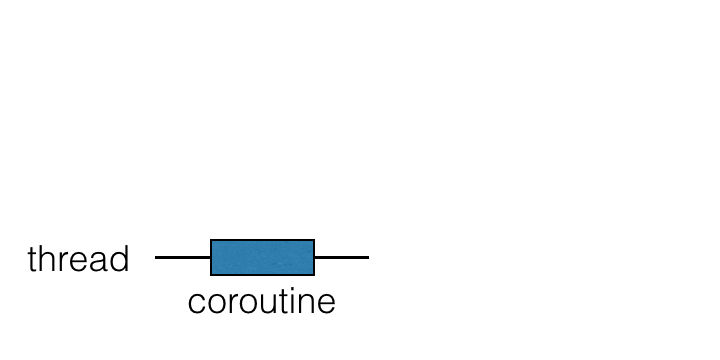

To what end do coroutines serve? Since they don’t need a stack, coroutines let programmers pause the running program and pick it back up later. This paves the way for asynchronous code that gives the impression of being synchronous yet does not block. For this reason, coroutines prevent the need for an excessive number of threads, each of which the developer must eventually manage. They also provide a more precise and streamlined solution than Java.
3.5 Data Classes
The fields (or variables) to hold data, the constructor, and the getter and setter methods for the fields/variables, in addition to ancillary functions like hashCode(), equals(), and toString(), must all be established by developers in Java. Although they may look like they have some functionality, in reality, these classes are just there to hold information.
Instead, the “data” keyword in Kotlin’s class declaration makes it easier to design classes that can store data. Then compiler automatically generate the constructor and numerous getter and setter procedures for fields and variables.
3.6 Smart Casts
Checking the type of parameters in a Java cast ensures that they are compatible with the operation.
The smart casts functionality in Kotlin is responsible for performing the necessary casting tests. The “is-checks” keyword allows Kotlin’s smart compiler to take care of managing repetitive casts (with safe values) efficiently.
fun demo(x: Any) { if (x is String) { print(x.length) // x is automatically cast to String } } |
fun demo(x: Any) { if (x is String) { print(x.length) // x is automatically cast to String } }
3.7 Checked Exceptions
However, Kotlin does not provide checked exceptions. That’s why Kotlin programmers don’t need to worry about declaring or catching exceptions.
Support for checked exceptions is available to Java developers. This necessitates the action of “catching” and “declaring” exceptions. To be sure, it’s not always easy and it does take some time. On the contrary hand, it guarantees error-free and reliable code quality. Consequently, there are both benefits and drawbacks to using checked exceptions. All boils down to the individual preferences of the programmers involved.
3.8 Functional Programming: Higher-Order Functions and Lambdas
Kotlin combines object-oriented and functional programming. Declarative in nature, the functional programming language is well-suited to the management of calculations using mathematical functions. Examples of functional programming ideas include high-order functions and lambda expressions.
The first one implies that functions are of the highest possible importance. This allows the statically typed language Kotlin to achieve most of its many possible functional types. In other words, there are several methods to implement a function.
Lambda expressions and anonymous functions are also supported in Kotlin. The term “functional literal” describes these. Therefore, it stands in for a function that has not been defined but is nevertheless allowed to be used as an expression.
On the other hand, Java is more constrained by the confines of the object-oriented paradigm. But it has also been making progress toward functional programming. Lambda expressions, functions that don’t have to be members of any particular class, have been available in Java since version 8 (2014). As a matter of fact, lambda expressions in Java may be provided as objects and run as needed.
On top of that, high-order functions were finally supported in Java after the advent of lambda expressions. A method in Java is equivalent to a function, and beginning with Java 8, lambda might be returned from methods.
Example of lambda expression:
In Kotlin:
val sum: (Int, Int) -> Int = { a: Int, b: Int -> a + b } |
val sum: (Int, Int) -> Int = { a: Int, b: Int -> a + b }
In Java:
int sum = (a,b) -> (a+b); |
int sum = (a,b) -> (a+b);
3.9 Primitive Types
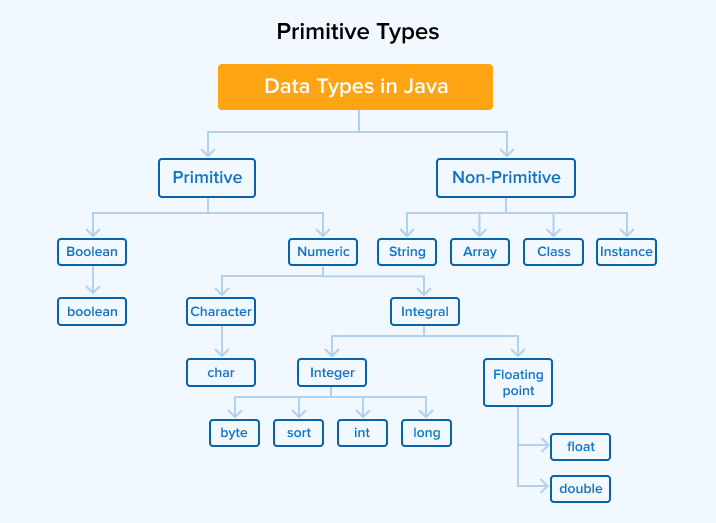
Primitive type variables in Java are not objects, but rather are predeclared data kinds in Java. There are eight distinct primitive data types available in Java: int, byte, short, double, float, boolean, char, and long. As a result, you can’t use structs or classes to describe these variables.
In Java, classes can be created to “wrap” a value of a basic type, even if primitive types themselves are not classes. It requires an explicit developer indication in Java.
Kotlin, on the other hand, treats any primitive type variable as an object as immediately as it is initialized.
3.10 Public Fields
Java supports public fields, often known as non-private fields. They allow the developer to alter an object’s description without affecting the callers, which may be very useful in cases when the callers of an object want to adapt to the object’s new representation. The fields may then be made public, preserving both the public API and the project’s supportability.
However, In Kotlin, a field is used as a part of a property to hold its value in memory. Here, one can not declare the fields directly.
3.11 Wildcard Types
In most programming languages, the question mark (?) is used as a wildcard to indicate a type that has not yet been defined (of variable, field, or parameter).
Wildcards are not supported in Kotlin like they are in Java. It replaces them with a declaration-site variant and type projections.
3.12 Implicit Conversions
While other languages may allow for implicit widening conversions, Kotlin does not. Because of this, there is no way to transform a smaller type into a larger type. Developers working in Kotlin will run across this problem unless they do an explicit conversion to get the appropriate type.
In contrast, developers don’t have to worry about performing explicit conversions while working with Java because the language enables implicit conversions.
Example:
Java:
public class myClass{ public static void main(String args[]) { int a = 81; System.out.println("Integer value : "+a); // Implicit Type Casting long b = a; // Int val to long data type } } |
public class myClass{ public static void main(String args[]) { int a = 81; System.out.println("Integer value : "+a); // Implicit Type Casting long b = a; // Int val to long data type } }
But in Kotlin, we can not directly assign integer value to the long data type.
var x = 100 var y : Long = x // Compiler error // Type mismatch: inferred type is Int but Long was expected var x = 100 var y: Long = x.toLong() // compiles successfully |
var x = 100 var y : Long = x // Compiler error // Type mismatch: inferred type is Int but Long was expected var x = 100 var y: Long = x.toLong() // compiles successfully
4. Tabular Comparison: Kotlin vs Java
| Parameters | Kotlin | Java |
|---|---|---|
| Static members | No static members exist for a class. | It has static members for a class. |
| NullPointerException | When writing in this language, you may use the safety call operator to implement null safety. | Null safety is not provided in java. |
| Wildcards | Wildcard types are not accessible. | It is possible to use wildcards in several forms. These are a subset of type arguments that regulate how generic (parameterized) types can be used without compromising on type safety. |
| Deployment | Coding in Kotlin is simple to deploy. | Tough to deploy Java programs. |
| Secondary Constructor | There is an idea of secondary constructors in Kotlin. Furthermore, more than one tertiary builder is possible. It allows variables to be initialized and adds logic to the class. | No such concept here, however, it is possible to have more than one constructor. |
| Semicolon | In Kotlin code, a semicolon is not necessary. | Java code always needs semicolons. |
| Expressions | Kotlin’s string template further supports expressions, which can include variables, operators, and method calls. | Expressions are not supported by Java strings in the same way that they are in Kotlin. |
| Lazy loading | Kotlin also offers the option of Lazy Loading, which is a convenient time-saving function. It is favored in cases where the property’s initialization has a significant effect on computing resources (such as memory, CPU, etc.). | Unlike other programming languages, Java does not support lazy loading. |
| DataType | There is no necessity to define the data type of each variable. | It is necessary to specify the data type of each variable. |
| Smart cast | It has a function called “smart cast”. To clarify, the Kotlin compiler does not ignore the condition inside an if statement. | Smart cast is available. |
| Annual Salary | Depending on the position, the typical annual income for Kotlin ranges between $68k – $135k in the USA. | A Java developer’s annual pay ranges between $92k-$180k in the USA. |
5. Java Issues That are Addressed in Kotlin
Kotlin addresses some shortcomings of Java:
- The type system regulates the use of null references.
- There aren’t any unrefined individuals here.
- In Kotlin, arrays are of fixed size.
- If you’re used with Java’s SAM-conversions, you’ll be pleased to know that Kotlin provides appropriate function types.
- Use-site variance without wildcards.
- Unfortunately, Kotlin does not provide checked exceptions.
6. Is Kotlin Replacing Java?
When comparing Kotlin vs Java, which has its own set of challenges, Kotlin emerges victorious, particularly when dealing with Null pointer exceptions. Kotlin’s characteristics, such as a superior type system, gradual modification of code, and less coding, make it more attractive for future usage, despite Java’s continued importance for android development.
Kotlin is quickly becoming a go-to language for creating Android apps since it encourages developers to try out new techniques and approaches in the realm of current programming. Kotlin is nearly identical to Java, so it’s a safe bet that it’ll do all that a good programming language should.

Vishal Shah
Vishal Shah has an extensive understanding of multiple application development frameworks and holds an upper hand with newer trends in order to strive and thrive in the dynamic market. He has nurtured his managerial growth in both technical and business aspects and gives his expertise through his blog posts.
Subscribe to our Newsletter
Signup for our newsletter and join 2700+ global business executives and technology experts to receive handpicked industry insights and latest news
Build your Team
Want to Hire Skilled Developers?

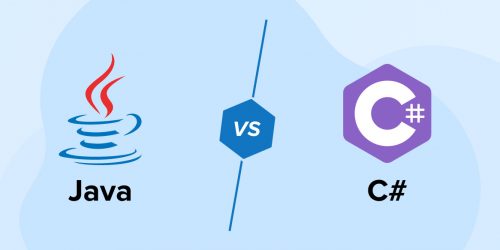
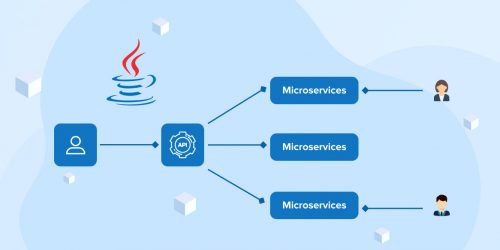


This comparison of Kotlin and Java is excellent! The author's in-depth explanations of both languages are clear, and the table summarizing the key differences is a fantastic resource. Worth a read!
Brilliant article! The Kotlin vs. Java comparison was clear and compelling, and I loved the deep dives into each language's quirks. This insights will definitely impact my next coding project.